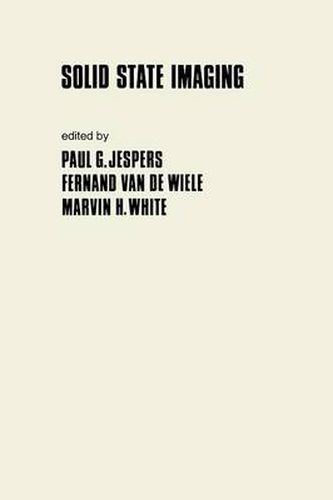Readings Newsletter
Become a Readings Member to make your shopping experience even easier.
Sign in or sign up for free!
You’re not far away from qualifying for FREE standard shipping within Australia
You’ve qualified for FREE standard shipping within Australia
The cart is loading…






This title is printed to order. This book may have been self-published. If so, we cannot guarantee the quality of the content. In the main most books will have gone through the editing process however some may not. We therefore suggest that you be aware of this before ordering this book. If in doubt check either the author or publisher’s details as we are unable to accept any returns unless they are faulty. Please contact us if you have any questions.
An Advanced Study Institute on solid-state imaging was held in Louvain-la-Neuve, Belgium on September 3-12, 1975 under the auspices of the Scientific Affairs Division of NATO. The Institute was organized by a scientific organizing committee consisting of Professor Paul Jespers and Professor Fernand Van de Wiele of the Universite’ Catholique de Louvain and Dr. Marvin H. White of the Westinghouse Electric Corporation. This book represents the con tributions of the lecturers at the Institute and the chapters pre sert, for the first time, a concise treatment of a very timely subject, namely, solid-state imaging. The organization of the book parallels the program at the Institute with an introduction r. omprised of historical development and applications. This is f0~lowed by the physics of photosensors which leads quite naturally into the various solid-state photosensor arrays. The subject of signal extraction, which is often an overlooked area, follows and the last part of the book is devoted to the various system’s con siderations. The subject matter of this book is suitable for a Wide range of interests from the advanced*student, through the practicing physcist and engineer, to the research worker. Although a novice may find some difficulty with the mathematical development, he can acquire a perspective into the field of solid-state imaging with this book. Likewise, portions of this book may be used as a text book since ~he chapters are instructional and self-contained.
$9.00 standard shipping within Australia
FREE standard shipping within Australia for orders over $100.00
Express & International shipping calculated at checkout
This title is printed to order. This book may have been self-published. If so, we cannot guarantee the quality of the content. In the main most books will have gone through the editing process however some may not. We therefore suggest that you be aware of this before ordering this book. If in doubt check either the author or publisher’s details as we are unable to accept any returns unless they are faulty. Please contact us if you have any questions.
An Advanced Study Institute on solid-state imaging was held in Louvain-la-Neuve, Belgium on September 3-12, 1975 under the auspices of the Scientific Affairs Division of NATO. The Institute was organized by a scientific organizing committee consisting of Professor Paul Jespers and Professor Fernand Van de Wiele of the Universite’ Catholique de Louvain and Dr. Marvin H. White of the Westinghouse Electric Corporation. This book represents the con tributions of the lecturers at the Institute and the chapters pre sert, for the first time, a concise treatment of a very timely subject, namely, solid-state imaging. The organization of the book parallels the program at the Institute with an introduction r. omprised of historical development and applications. This is f0~lowed by the physics of photosensors which leads quite naturally into the various solid-state photosensor arrays. The subject of signal extraction, which is often an overlooked area, follows and the last part of the book is devoted to the various system’s con siderations. The subject matter of this book is suitable for a Wide range of interests from the advanced*student, through the practicing physcist and engineer, to the research worker. Although a novice may find some difficulty with the mathematical development, he can acquire a perspective into the field of solid-state imaging with this book. Likewise, portions of this book may be used as a text book since ~he chapters are instructional and self-contained.